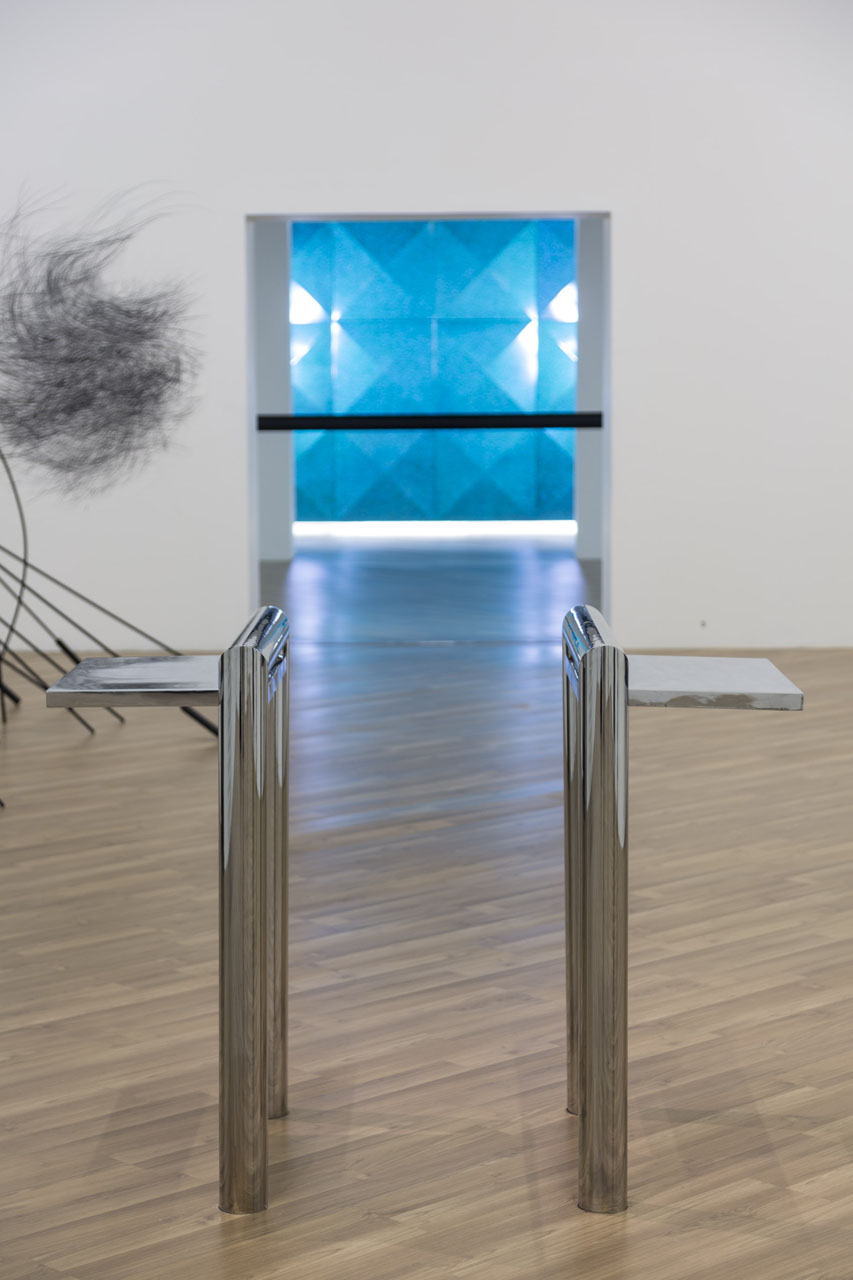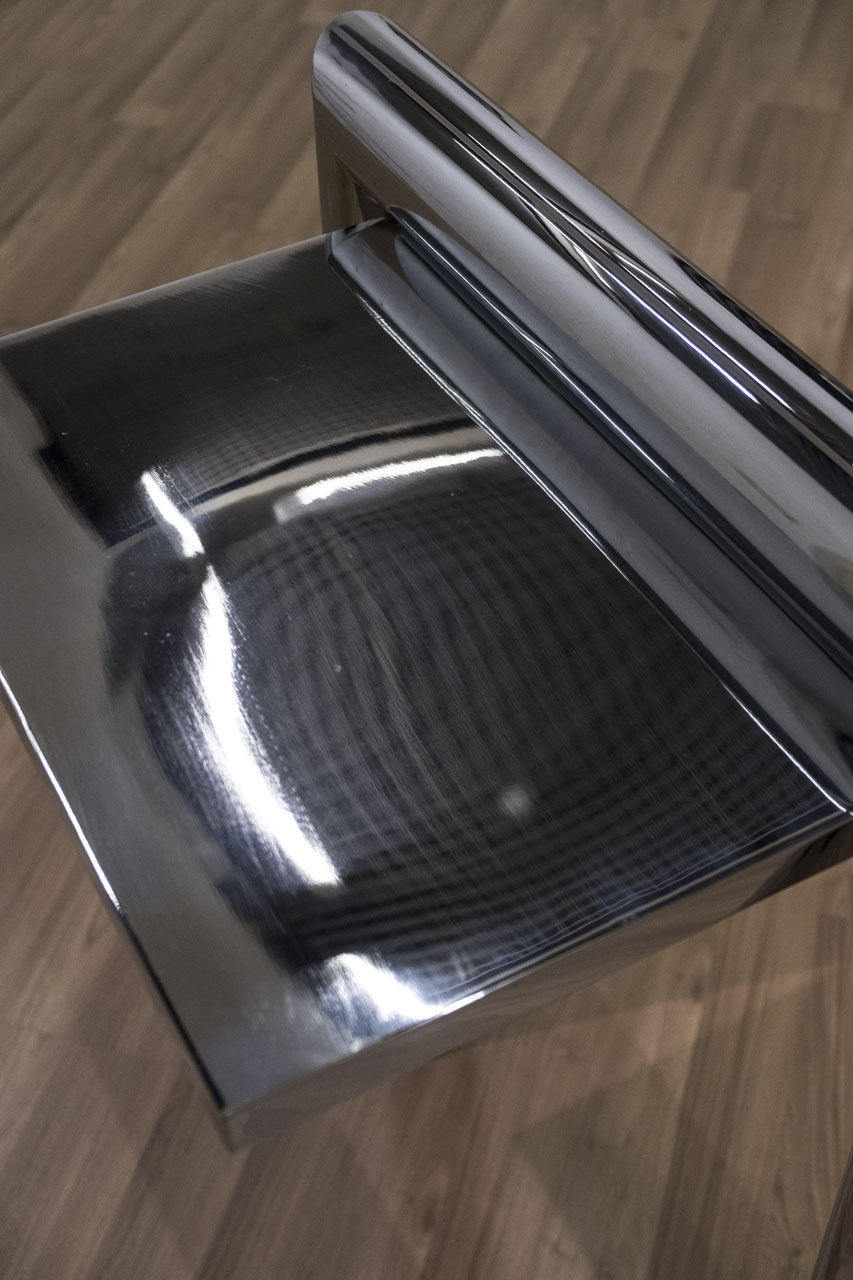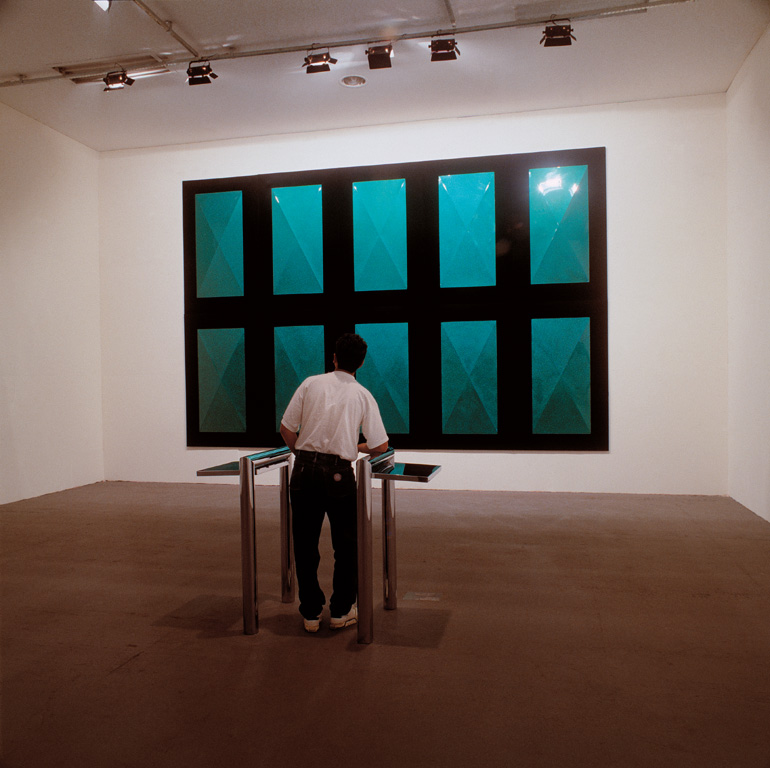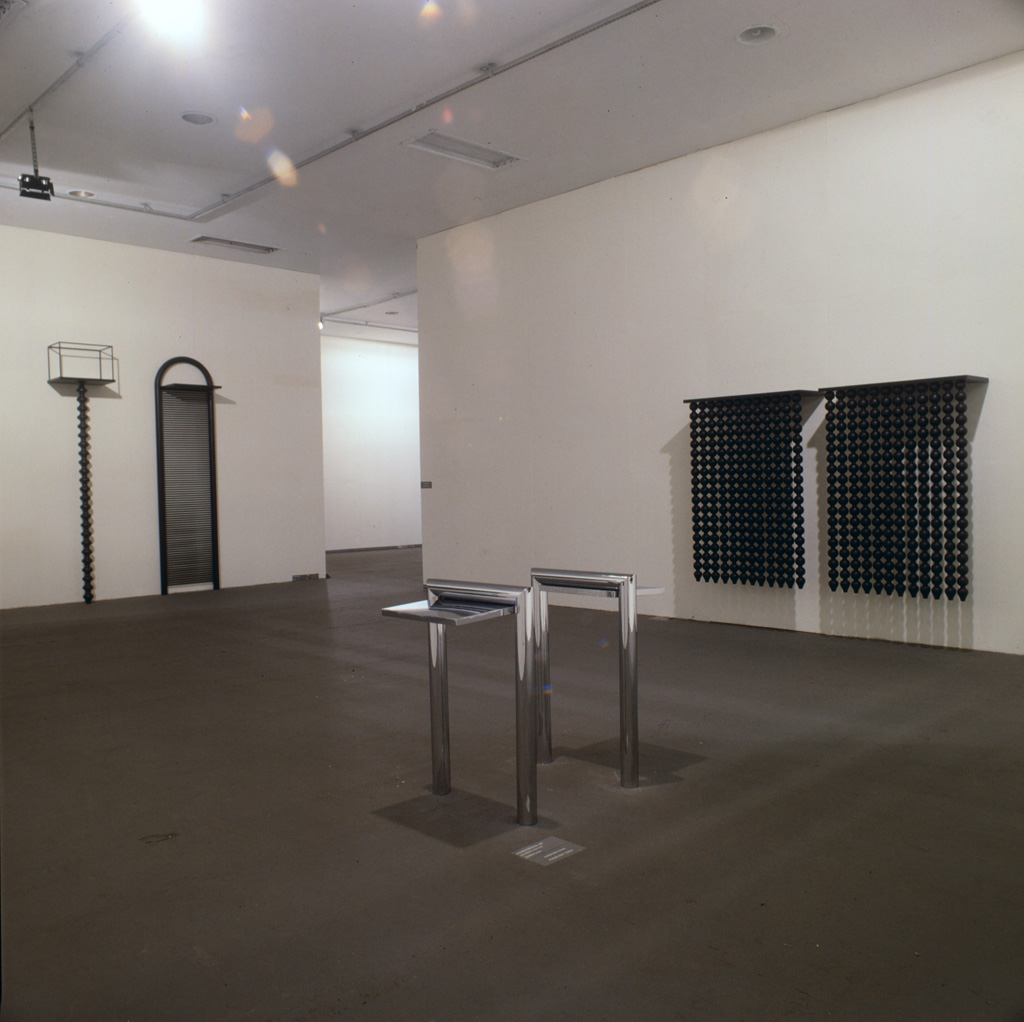[português]
"Alguns Pássaros (Those in Flight)
tratou de introduzir, de forma mais definitiva, o caráter da obra como um lugar
para o observador, cuja função primeira seria interromper a realidade contínua
de seu espaço-tempo. Na medida em que definia um espaço para a contemplação no
interior da própria obra, ampliava os objetivos almejados com a introdução dos
"beirais". Nesse sentido, o trabalho poderia ser entendido como um
mirante, lugar que propicia a experiência distanciada da realidade ou mesmo um
aparelho de transporte para outro espaço-tempo. “Alguns Pássaros (Those in Flight)”
foi projetado tendo em vista a medida exata do corpo; sugere que o espectador
ocupe este lugar. No título da obra, alguns é pronome indefinido, plural que
significa mais de um, diversos, vários (entre maior número) e refere-se àqueles
que optarem por participar do trabalho; pássaros, ou a palavra em inglês flight
(vôo), sugere a ideia de uma situação transitória, ou seja, a experiência do
olhar atingindo outras paragens. No entanto, a sugestão de deslocamento, que se
efetiva apenas virtualmente, é paradoxal: o espectador deve ser capturado pela
escultura por meio de seus atributos hipnóticos. A superfície cromada dessa
escultura absorve e reflete o seu entorno e as duas bandejas acopladas nas
laterais da obra funcionam como espelhos que capturam o espectador ao refletir
sua imagem. A passagem de um revestimento preto-fosco (característico das
esculturas até então) para uma superfície cromada, foi a opção por uma
dissolução da obra no seu entorno bem como o rebaixamento de sua presença como
desenho expressivo, a fim de privilegiar outros conteúdos. Com inspiração nos “beirais”,
o arranjo dessas estruturas verticais fixadas no chão para apoiar o corpo tinha
por objetivo afirmar a obra como um lugar protegido, para uma experiência que
só poderia ser vivenciada através do corpo
capturado e do olhar.
[inglês]
"Some Birds (Those in Flight) tried to introduce, in
a more definitive way, the character of the work as a place for the observer,
whose primary function would be to interrupt the continuous reality of its
space-time. Insofar as it defined a space for the contemplation inside the work
itself, expanded the desired objectives with the introduction of the
"eaves". In this sense, the work could be understood as a lookout, a
place that provides the experience distanced from reality or even a transport
device to another space- time.
“Some Birds (Those in Flight)” was designed with exact
body measurement in mind; suggests that the spectator occupies this place. In
the title of the work, some is an indefinite pronoun, plural meaning more than
one, diverse, several (among a greater number) and refers to those who choose
to participate in the work; birds, or the English word flight, suggests the
idea of a transitory situation, that is, the experience of looking reaching
other places. However, the suggestion of displacement, which only takes effect
virtually, is paradoxical: the spectator must be captured by the sculpture
through its hypnotic attributes. The chromed surface of this sculpture absorbs
and reflects its surroundings and the two trays attached to the sides of the
work act as mirrors that capture the viewer by reflecting their image. The
transition from a matte black coating (characteristic of sculptures until then)
to a chromed surface was the option for dissolving the work in its
surroundings, as well as the downgrading of its presence as an expressive
drawing, in order to privilege other contents. Inspired by the “eaves”, the
arrangement of these vertical structures fixed to the ground to support the
body aimed to affirm the work as a protected place, for an experience that
could only be experienced through the captured body and the gaze.
Ana Maria Tavares, 2000
 Alguns Pássaros (Those in Flight). Vista da exposição "No Lugar Mesmo: Uma Antologia de Ana Maria Tavares", na Pinacoteca de São Paulo, 2016. Créditos: Ruy Teixeira.
Alguns Pássaros (Those in Flight). Vista da exposição "No Lugar Mesmo: Uma Antologia de Ana Maria Tavares", na Pinacoteca de São Paulo, 2016. Créditos: Ruy Teixeira.  Detalhe da obra Alguns Pássaros (Those in Flight), 1991.Créditos: Ruy Teixeira.
Detalhe da obra Alguns Pássaros (Those in Flight), 1991.Créditos: Ruy Teixeira.  Alguns Pássaros (Those in Flight). Vista da exposição "No Lugar Mesmo: Uma Antologia de Ana Maria Tavares", na Pinacoteca de São Paulo, 2016. Créditos: Ruy Teixeira.
Alguns Pássaros (Those in Flight). Vista da exposição "No Lugar Mesmo: Uma Antologia de Ana Maria Tavares", na Pinacoteca de São Paulo, 2016. Créditos: Ruy Teixeira.  Alguns Pássaros (Those in Flight). Vista da 21ª Bienal de São Paulo, São Paulo, 1991.
Alguns Pássaros (Those in Flight). Vista da 21ª Bienal de São Paulo, São Paulo, 1991.  Alguns Pássaros (Those in Flight). Vista da 21ª Bienal de São Paulo, São Paulo, 1991.
Alguns Pássaros (Those in Flight). Vista da 21ª Bienal de São Paulo, São Paulo, 1991.